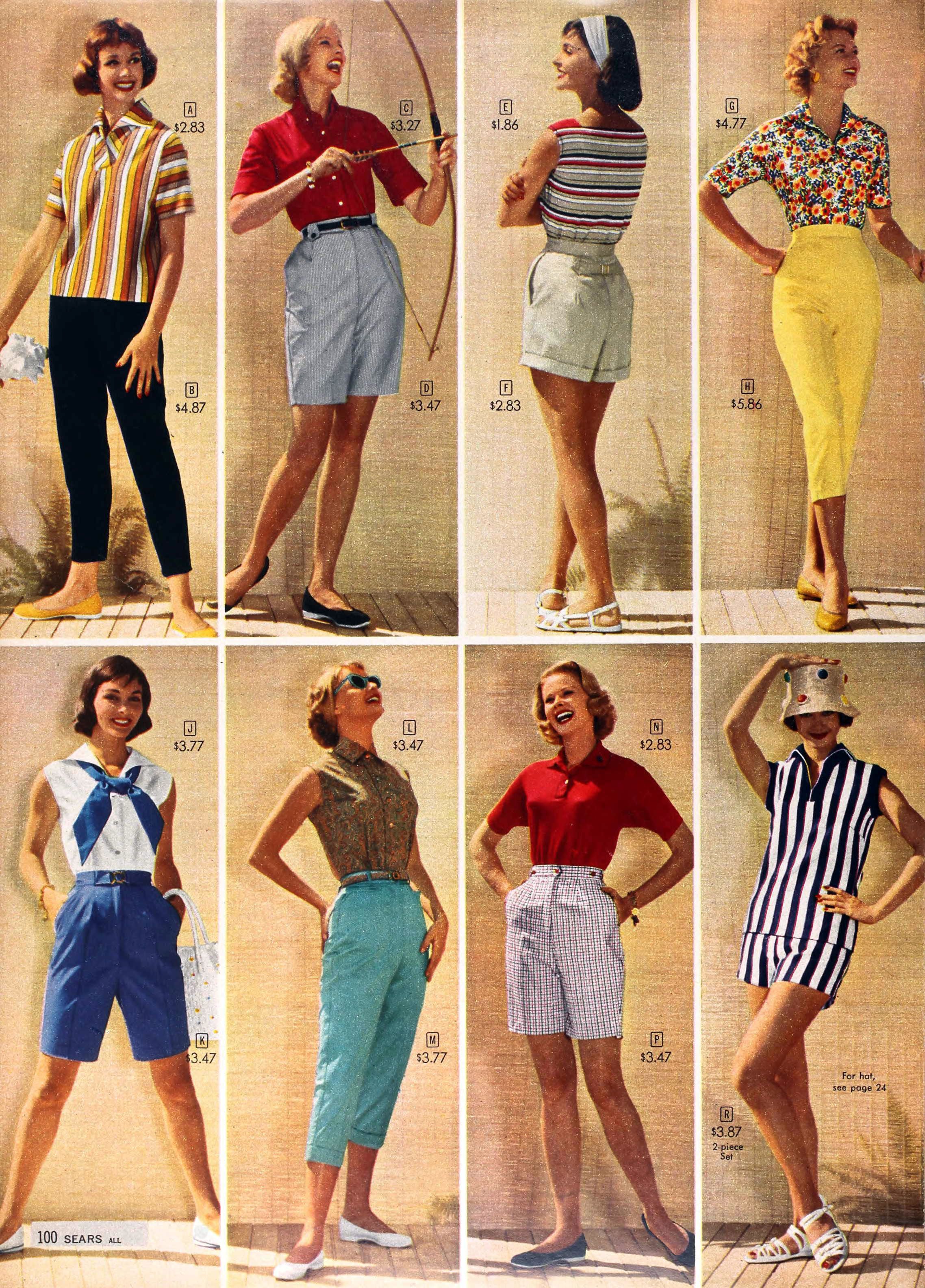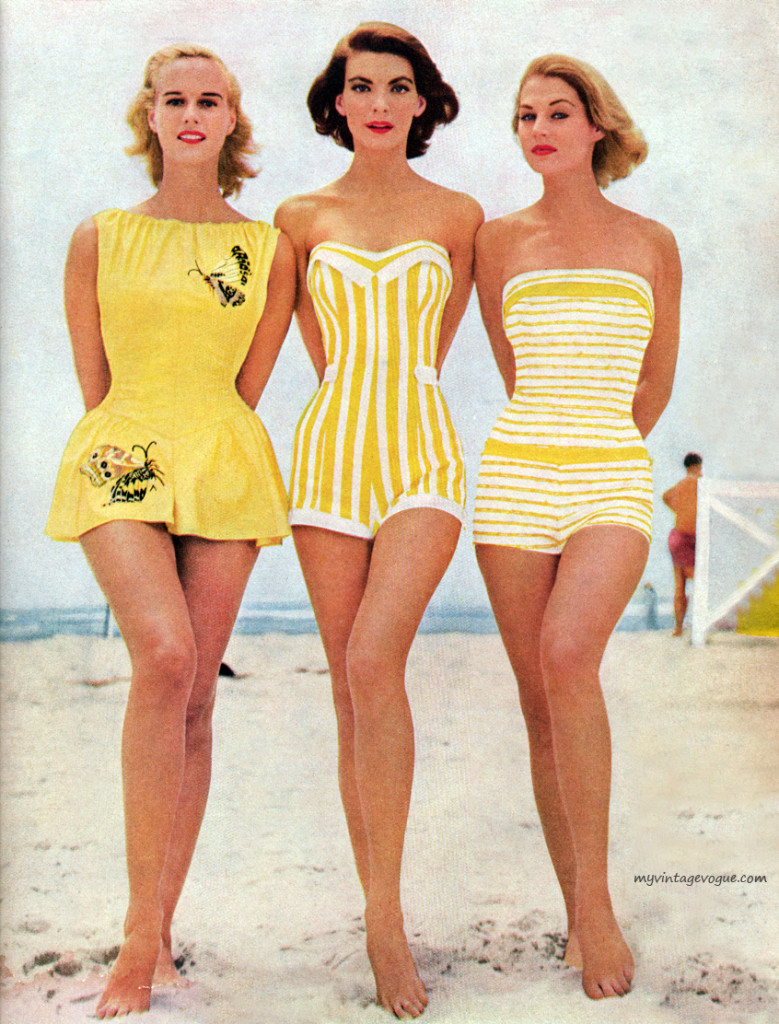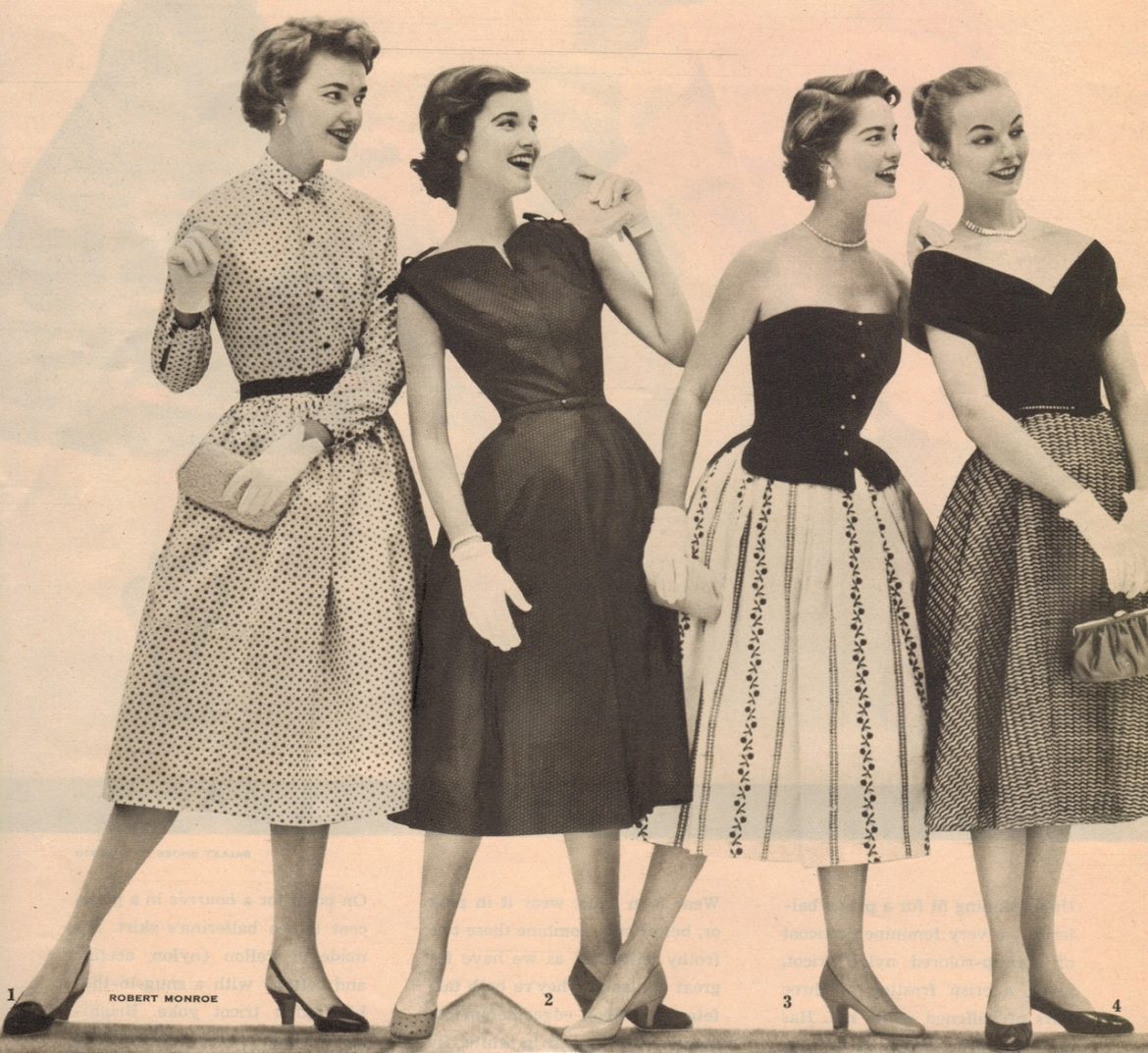Women’s Fashion in 1950s
Style and fashion are greatly influenced by other major events in the history, so when we look back at the 1950s and what women wore at the time, we have to take into account the bigger picture and consider what helped create the 1950s fashion.
Namely, during World War II, women began to gain independence since men were away, and they were left to make a living and go to work themselves. Naturally, this affected the way the dressed, as they started spending time in offices and factories. Nonetheless, clothing was still quite restricted, including the length of skirts and the size of collars. Apart from that, women began wearing pants, even for work. They had to fix some items that were past their prime to make use of those.

The year 1947 is of particular importance for women fashion. That year, Christian Dior changed the course of fashion history and set up a look that remained popular for the following decade. Dior’s first fashion collection, which Harper’s Bazaar editor Carmel Snow dubbed the “New Look,” helped take a sharp turn, given it was a complete opposite of the 1940s style. Instead of squared shoulders (which were inspired by military uniform), soft shoulders came into play, together with an hourglass figure with an accented tiny waist, and huge, billowing skirts replaced the short, straight ones. In other words, the New Look was extremely feminine, for a change, and it could be described as “reminiscent of the mid-nineteenth century.”
Just like any other huge change, the New Look, too, initially stirred up the public and made many women outraged because they had just gained significant equality in work and fashion, and they wanted it to stay that way. Even though the new clothes required constant maintenance and a set of accessories to be perfect, by the start of the 1950s, everybody got used to the New Look.
Once men returned to their homes, women, too, went back to their previous role to a great extent – they went back to being wives and mothers, thus, they could afford to commit more time to clothe. The newly-built suburbs gained in popularity. Society became more conservative and everyone wanted a peaceful and traditional life in a quiet suburb – everyone wanted to look ‘normal.’ The husband was, again, the breadwinner of the house, and the wife was supposed to dress up for him. Moreover, women’s appearance was associated with their husbands’ success, so their new job was to make sure they look beautiful.
The New Look was very glamorous, and it required women to be “impeccably dressed and groomed” not just outside of the house, but at home, too, when their husbands were there. Accessories such as hats, shoes, bags, belts, gloves, and jewelry were a must. It was only in privacy that women could wear something more comfortable and casual, which eventually became acceptable in public, as well.

Paris was again the center of fashion, while the US and Britain required rights to copy the garments presented on fashion shows held twice a year. Thanks to fashion magazines like Vogue and Women’s Wear Daily, designer fashions were present in every home. Many designers, led by Dior, began a new trend – contracting out the manufacture of some clothing and accessories, so their names were stamped with the labels. These included hats, bags, gloves, perfumes, etc. Even though this is a common phenomenon nowadays, back then, it was an innovation, together with Dior’s idea to set up boutiques all over the world.
Some of the most commonly used fabrics included tulle, silk, velvet, and satin, as well as polyester and rayon, which were mostly used for making blouses, dresses, and suits. When it comes to daywear, the most common were cotton and wool, while nylon was the leader for making undergarments – delicate underwear, stockings, and nightgowns.
However, not everyone loved the New Look. Coco Chanel, for instance, hated it, and she even decided to reopen her business in 1954, when she came back with boxy jackets and straight skirts, which were topped off with a quilted bag and costume jewelry. Then in 1957, Hubert de Givenchy presented his sack dress, which took the emphasis away from the thin waist.
The New Look did remain popular throughout the 1950s, but due to high maintenance, it couldn’t have lasted any longer. In the 1960s, it was replaced by the rebellious culture and the hippie look.




